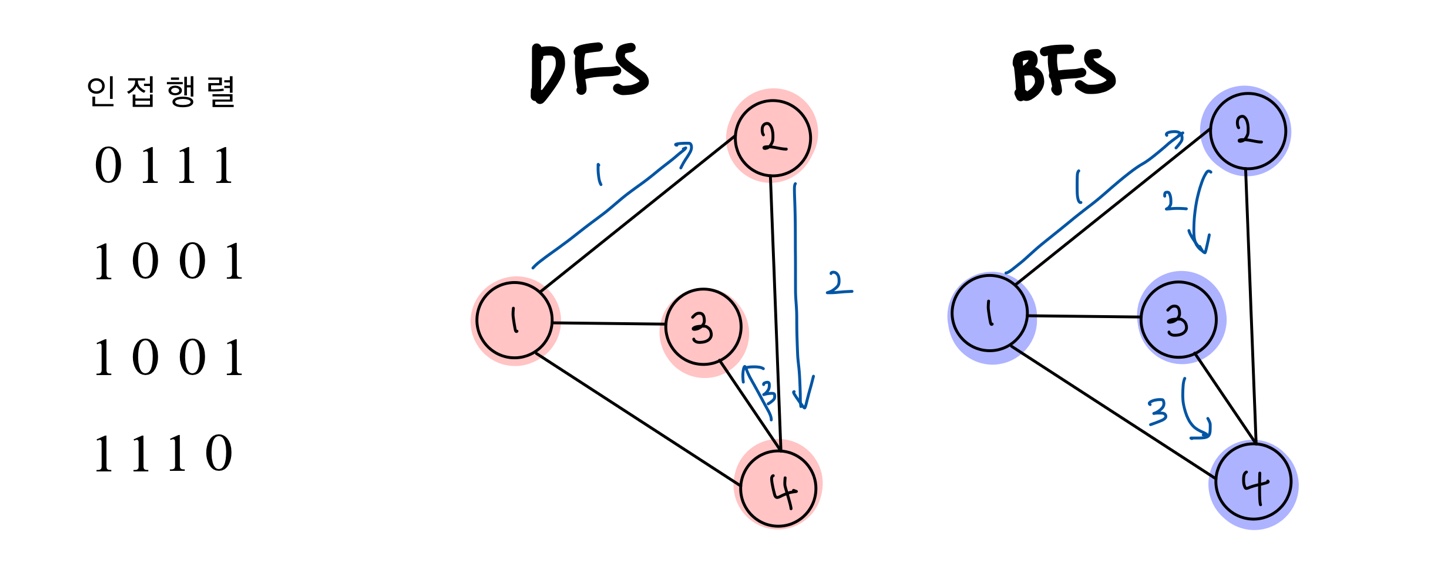📃DFS와 BFS 링크
👩🏻💻풀이
import java.util.LinkedList;
import java.util.Queue;
import java.util.Scanner;
public class DFSBFS_1260 {
static int[][] matrix;
static boolean[] visited;
public static void main(String[] args) {
Scanner scan = new Scanner(System.in);
int node = scan.nextInt();
int edge = scan.nextInt();
int start = scan.nextInt();
matrix = new int[node+1][node+1];
for(int i = 0; i < edge; i++) {
int x = scan.nextInt();
int y = scan.nextInt();
matrix[x][y] = matrix[y][x] = 1;
}
visited = new boolean[node+1];
dfs(start);
System.out.println();
visited = new boolean[node+1];
bfs(start);
}
public static void dfs(int start) {
visited[start] = true;
int count = 1;
System.out.print(start+ " ");
if(count == matrix.length - 1)
return;
for(int i = 1; i < matrix.length; i++) {
if(matrix[start][i] == 1 && visited[i] == false){
count++;
dfs(i);
}
}
}
public static void bfs(int start) {
Queue<Integer> que = new LinkedList<Integer>();
que.add(start);
visited[start] = true;
System.out.print(start+ " ");
while(!que.isEmpty()) {
int check = que.peek();
que.poll();
for(int i = 1; i < matrix.length; i++) {
if(matrix[check][i] == 1 && visited[i] == false) {
que.add(i);
visited[i] = true;
System.out.print(i+ " ");
}
}
}
}
}문제는 그래프를 DFS와 BFS를 이용하여 탐색하는 것 !
예제 입력 1
4 5 1
1 2
1 3
1 4
2 4
3 4

예제1번을 예시로 보면 DFS는 1-2-4-3, BFS는 1-2-3-4 순으로 탐색한다.
아래와 같은 순서로 코들르 작성했다
1. 인접행렬 만들기
2. DFS 메소드 - 재귀로 구현
3. BFS 메소드 - Queue(First In First Out)로 구현
.png)